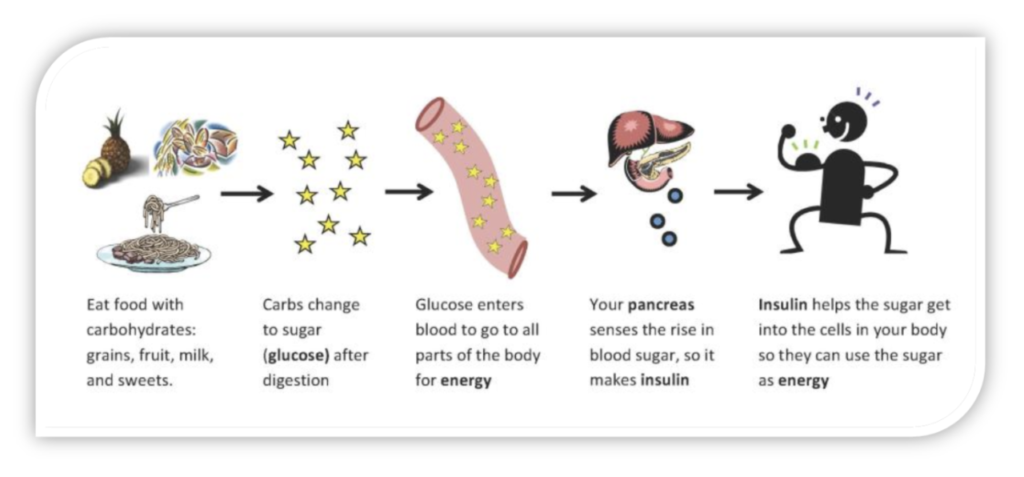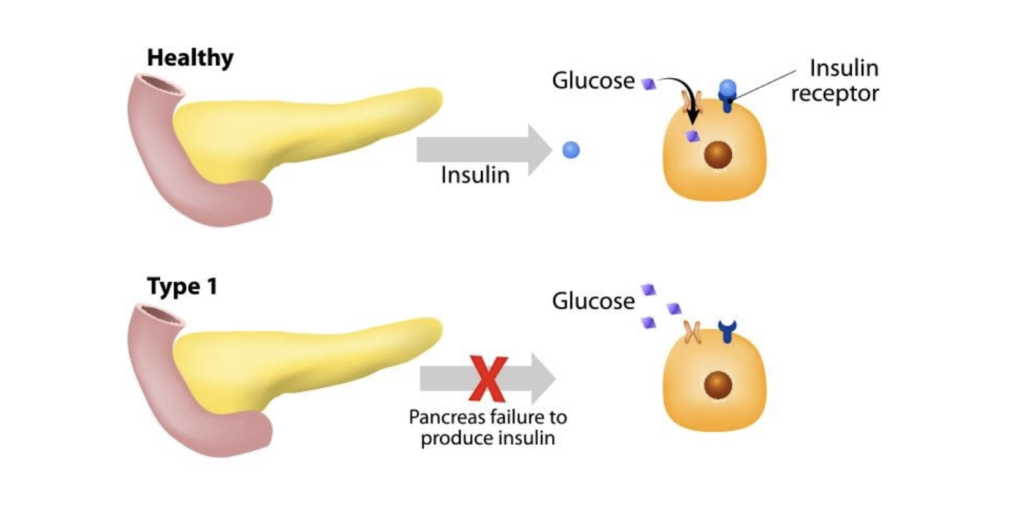What is Type 1 Diabetes Mellitus
Diabetes mellitus is a chronic disease that occurs when the pancreas is no longer able to make insulin, or when the body cannot make good use of the insulin it produces. Insulin is a hormone made by the pancreas that allows glucose to enter into the body’s cells to produce energy. During the digestive process, carbohydrates are broken down into glucose, which travels via the bloodstream to the cells, where insulin acts as a key to unlock the cells and let the glucose enter them.

Type 1 diabetes mellitus is usually caused by an autoimmune reaction where the body’s defence system attacks the cells that produce insulin. The reason this occurs is not fully understood. People with type 1 diabetes produce very little or no insulin. The disease may affect people of any age but usually develops in children or young adults. People with this form of diabetes need injections of insulin every day in order to control the levels of glucose in their blood.

In type 1 diabetes, there’s no insulin to let glucose into the cells, so sugar builds up in your bloodstream. This can cause life-threatening complications.
About 8% of people with diabetes in the UK have Type 1 diabetes. It has got nothing to do with diet or lifestyle, it just happens. We’re still not sure what causes it. It is more likely to occur if there is a family history of type 1 diabetes.
When to see a doctor
Consult your doctor if you notice any of the above signs and symptoms
- Feeling very thirsty and going to the toilet more frequently than usual, particularly at night
- Feeling very tired
- Losing weight without trying
- Recurrent thrush
- Blurred vision
Prevention
There’s no known way to prevent type 1 diabetes. However, researchers are working on preventing the disease or avoiding further destruction of the islet cells in people who are newly diagnosed.
Treatment
Over a long period of time, high glucose levels in your blood can seriously damage your heart, your eyes, your feet and your kidneys. However, with the right treatment and care the long-term effects of diabetes and high glucose levels can be managed.
Insulin. Anyone who has type 1 diabetes needs lifelong insulin therapy.
Insulin can not be taken orally to lower blood sugar because stomach enzymes will break down the insulin, preventing its action. You’ll need to receive it either through injections or an insulin pump.
Home blood glucose monitoring. Check your blood glucose – the more you check, the more you know, the better your control
The goal is to keep your blood sugar level as close to normal as possible to delay or prevent complications. Generally, the goal is to keep your daytime blood sugar levels before meals between (4.4 and 7.2 mmol/L and your after-meal numbers no higher than 10 mmol/L two hours after eating.
Healthy eating and carbohydrate counting. There’s no such thing as a diabetes diet. However, it is important to centre your diet on nutritious, high-fibre foods and that you eat fewer animal products and refined carbohydrates, such as white bread and sweets.
You will learn how to count the amount of carbohydrates in the foods you eat so that you can give yourself enough insulin to properly metabolize those carbohydrates. A registered dietitian can help you create a meal plan that fits your needs.
Physical activity: Everyone needs regular aerobic exercise, and people who have type 1 diabetes are no exception. First, get your doctor’s OK to exercise. Then choose activities you enjoy, such as walking or swimming, and make them part of your daily routine.
Remember that physical activity lowers blood sugar. If you begin a new activity, check your blood sugar level more often than usual until you know how that activity affects your blood sugar levels. You might need to adjust your meal plan or insulin doses to compensate for the increased activity. Do speak to your diabetes team for advice.
By Dr Mohgah Elsheikh
 Dr Mohgah Elsheikh MBBCh, FRCP
Dr Mohgah Elsheikh MBBCh, FRCP



